My Role
UX Designer & Researcher
Summary
About-Pluto Pay is an App that specializes in Digital payments and Financial Services. This App will allow users to transfer money safely and securely along with providing a digital wallet feature that can be used at Shopping Malls, Grocery Stores, Pharmacies, Restaurants, etc.
Problem Statement-A lot of users around the world want to find a simple solution to send money internationally and nationally without any kind of hassles including transfer fees, less time, and providing them with safety and security with sending money. They also want to be able to make payments in grocery stores, malls, restaurants, etc., through their phone. We will know this to be true when users have the potential platform to do so.
Target Audience- The Target audience is any individual around the world however, the minimum age group for this app is recommended for 16-18, mid-high school students who want to save money for their goals. Other age groups can refer to mid-adults (18-40) during times when they have primary expenses including college, buying a car, purchasing a house, paying rent or mortgage bills, groceries, and shopping, and transferring money. Ages 65 and older can also be an option for those who still want to use their phone to send money.
Duration
7 months
Tools
Figma, Fig Jam, Survey Monkey, & Microsoft PowerPoint
Design Process
1. Discover
During the project's initial phase, I started with a discovery process, starting off with a competitive market analysis aiming to identify competitors within the financial services sector. Subsequently, I considered the strengths and weaknesses of their organizations and services along with other factors on their business approach. Furthermore, I gathered valuable insights directly from users to inform our strategic direction with User Surveys and User Interviews.
Competitive SWOT Analysis
(Strengths, Weaknesses, Opportunities and threats)
Competitors
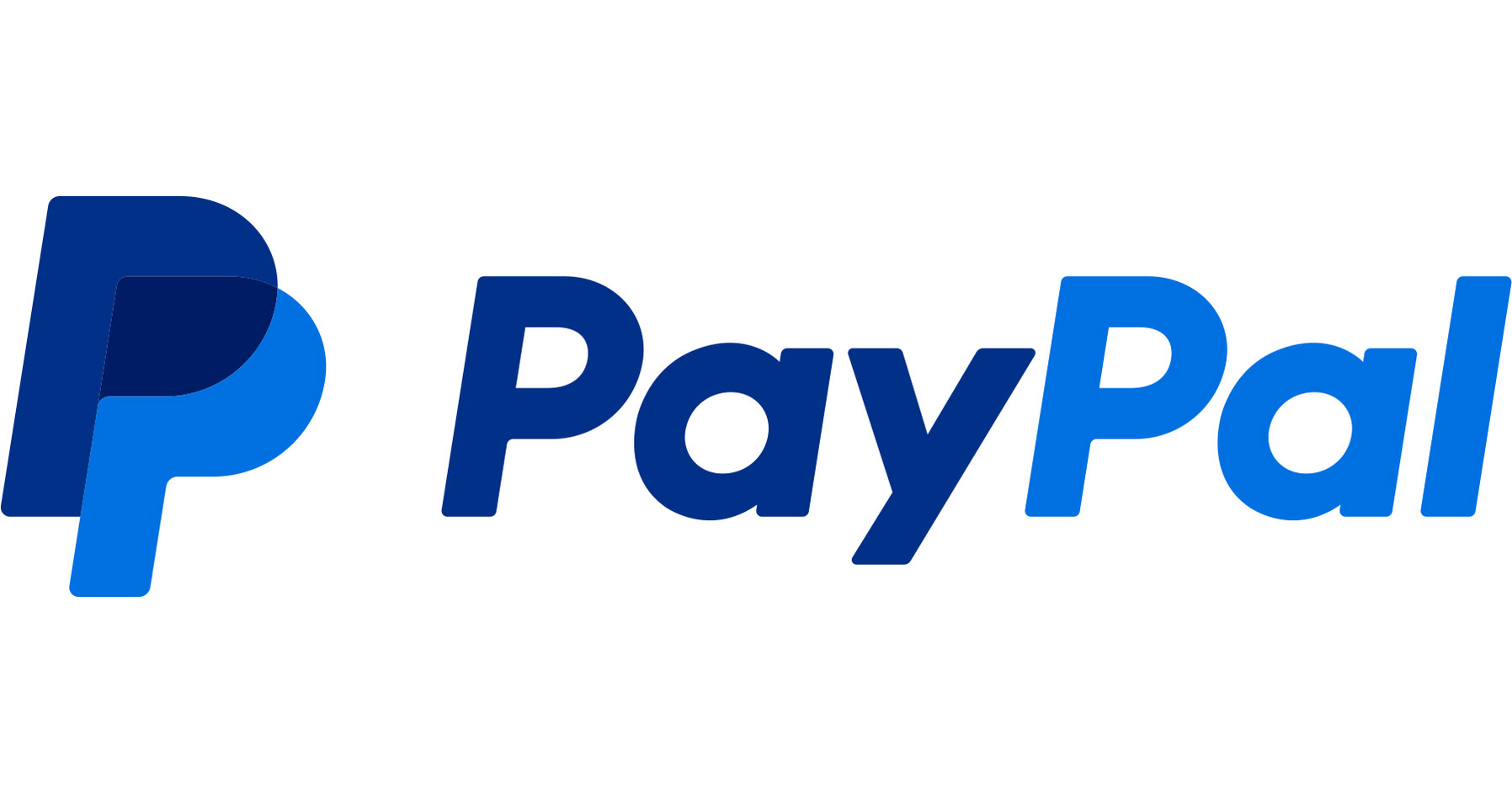
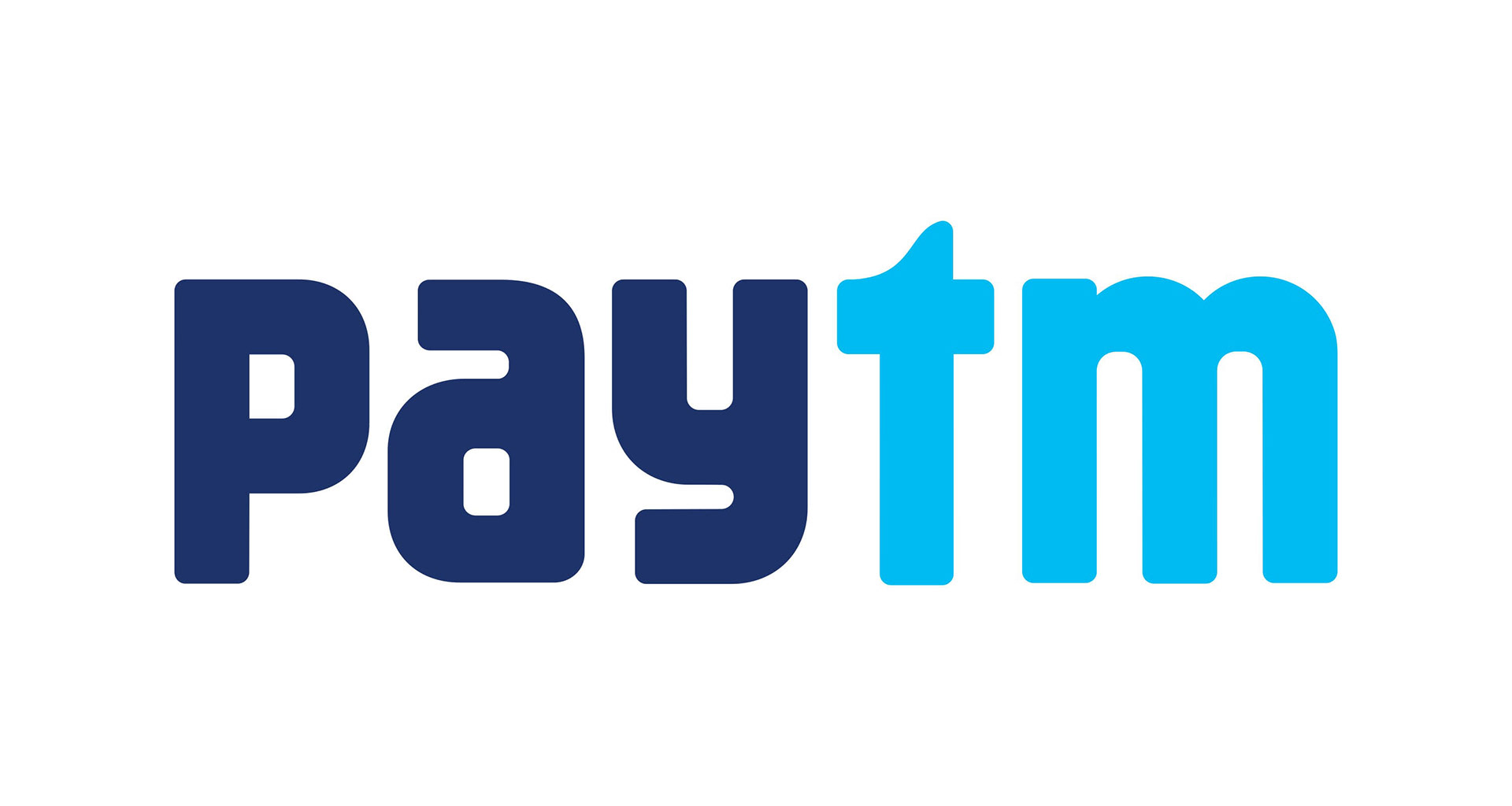
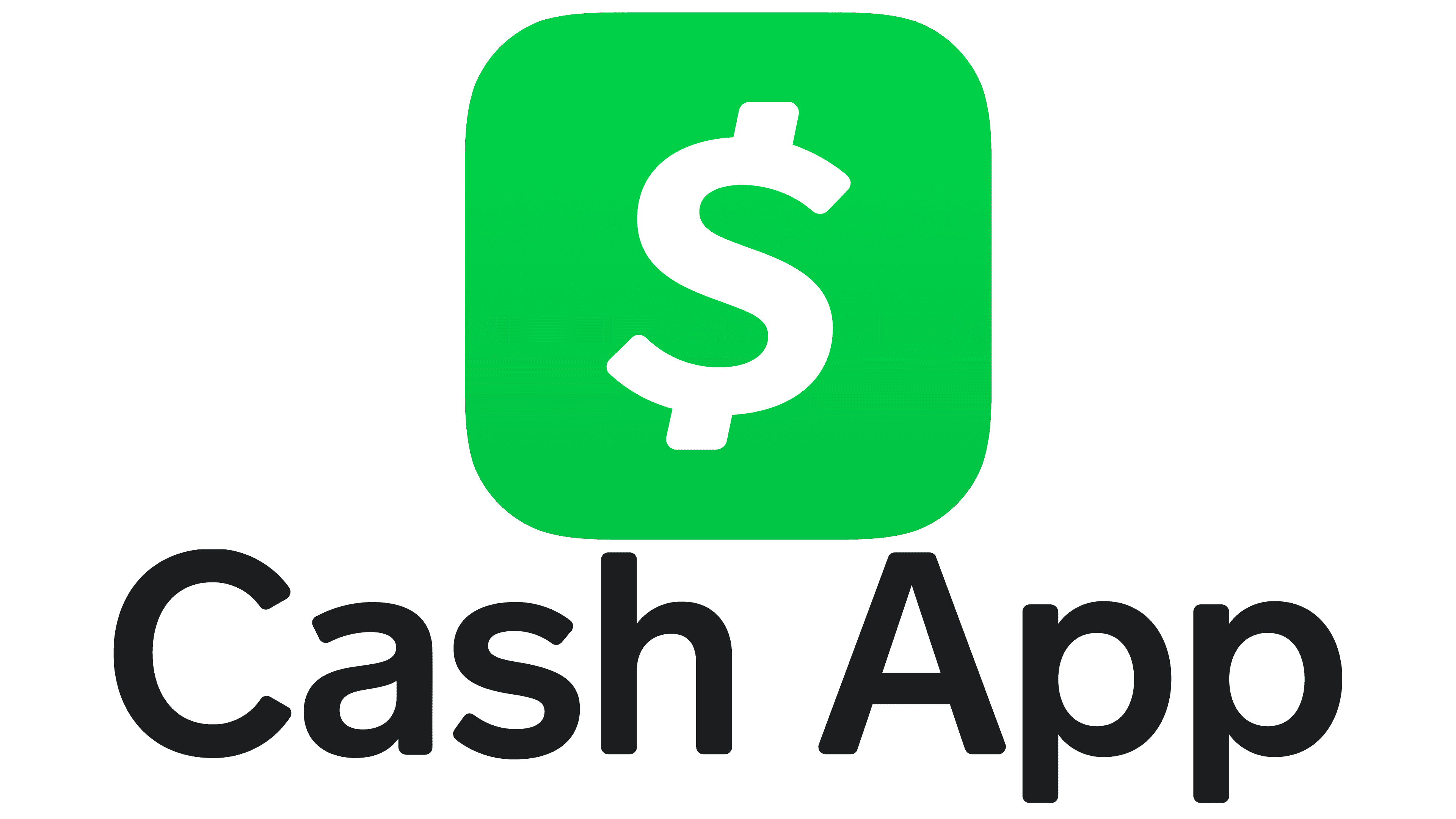
User Surveys
Participant Count: 17
Questions Count: 8
Results
User Interviews
Participant Count: 4
Questions
Affinity Mapping
Based on Overall User Research Findings
2. Define
The next phase was to define the problem statement, current processes, pain points and possible opportunities to empathize with the users.
Personas
The personas were taken from User Research Data to define each individual problem statement and the goals when it comes to using financial services.
Journey Maps
I also created Journey maps to demonstrate Users' current processes and Pain points in the journey of using financial services.
User Stories
Login/Signup
1. As a New User, I want to be able to set up a password and if possible a Face Authentication process, So I can trust that my account will be secure and protected
2. As an Existing User, I want to be able to use the ‘face authentication’ feature to log into my account, so It will not be risky when or if I lose my phone.
Onboarding
1. As a new user, I want clear guidance on how to use the app, so I can learn how to make my transfers and money safe and prevent it from falling into the wrong hands.
2. As a New User, I want to be able to link my account information from the beginning of on boarding, so I will not have to go through the hassle of entering my details numerous times when sending money or making payments.
Navigation
1. As a new user, I want the navigation labels to be clear, so I will be able to navigate through the app and get my tasks done.
3. Ideate
Next, I formulated solutions and ideas out of which I incorporated one of the user centered Design principals which is card sorting and it helped me in constructing User flows and the Sitemap.
Card Sorting
Card sorting was to construct the Sitemap and the user flows for PlutoPay to determine what features and functionalities the users can expect when using the App.
Topics & Categories
Insights from Card Sorting
•Most of the participants recommended keeping the QR Code on the E-Wallet topic.
•There were a couple of them who recommended considering rent as a private beneficiary as sometimes they used to pay private landlords.
•There were some mixed debates on how to implement users’ debit/credit cards whether on the E-wallet or simply on their profile page.
•All participants agreed on the idea of implementing bill payments and loved the idea of considering a bill payment feature and page.
User Flows
After cart sorting, I took the data from the insights and started planning out some basic User Flows to demonstrate each task users need to do and what goals they want to accomplish out of these tasks.
Login/Sign Up
Send Money
Information Architecutre
The information architecture was taken from Card sort results to construct the structure of Pluto Pay.
Wireframes
Navigation Screens
E Wallet Screens
Money Transfer Screens
4. Test & Validate
After Creating the wireframes, it was time to test the prototypes to analyze if users were able to complete the primary functions of the app and reiterate according to any frustrations or errors users faced when interacting with the prototype.
Usability Test
Background
Participant Count: 5
Age Range: 25-60
Test Format: All tests were conducted in moderated in person format
Test Duration: Sessions lasted 15-20 minutes and were conducted from January 1st-3rd.
Tasks & Scenarios
Scenario 1: You are new to Pluto Pay
-Direct Task 1: Create an account
-Direct task 2: Experience Onboarding
Scenario 2: You would like to use the App as a wallet for Groceries, malls, Convenient stores, etc.
-Direct Task 1: Add a new card
Scenario 3: You would like to send money to someone; however, you did not add them to your list yet.
-Direct Task 1: Add a new beneficiary
-Direct task 2: Transfer Money
Participants
Results (Affinity Map)
Overall Observations
1. Onboarding: 40% of the participants skipped the on boarding process
2. Technology: This was tested on my laptop and 60% of the users did not engage in the feel of using a mobile app through phone so it is important to try to open the Figma files through my phone next time.
3. Focus: Even though note taking is essential during usability testing, eye contact on the participants is equally important.
4. New Beneficiary form: 60% of the participants did not understand why there was no name input field as they mentioned they play a key role in implementing a customer’s banking details.
Low Fidelity to High Fidelity
Style guide
A/B Testing
Transactions
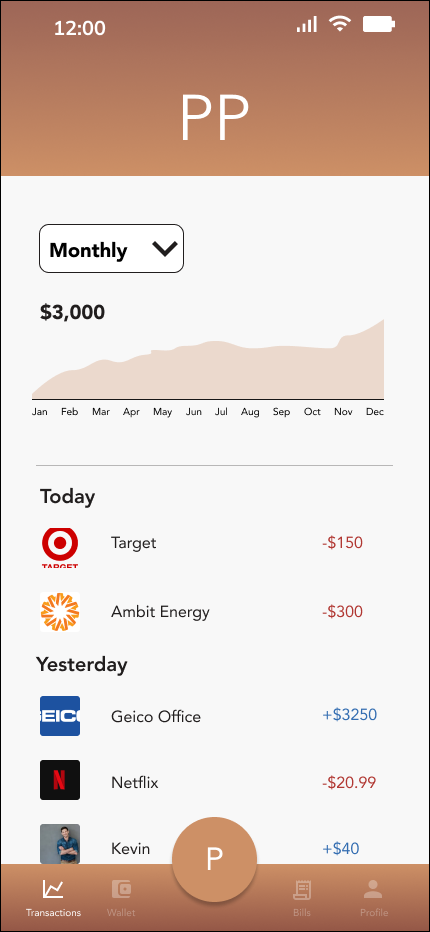
Option 1
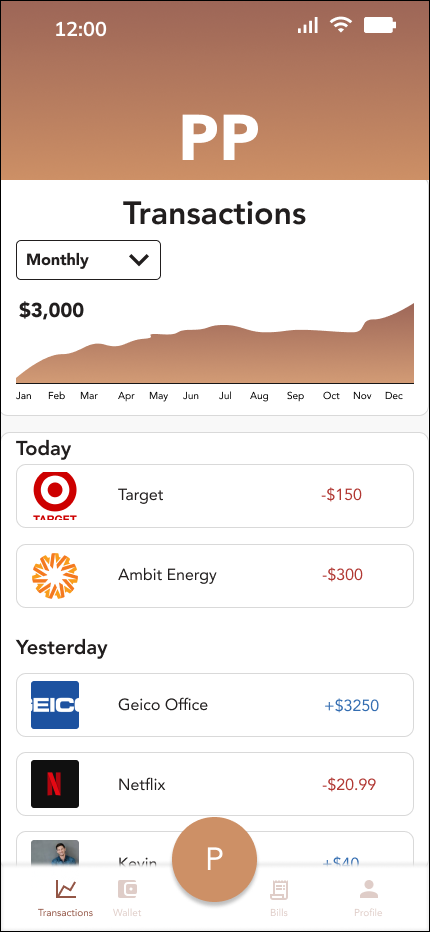
Option 2
1. 5 out of 7 participants mentioned that the design on the navigation bar for option 1 looked amazing, however they said that the navigation bar in Option 2 is easy to read.
2.According the analyses that outlines the line by line transactions, 4 out of 7 participants found Option 2 more convenient as they said the design will give them an option to view the transaction.
Wallet

Option 1
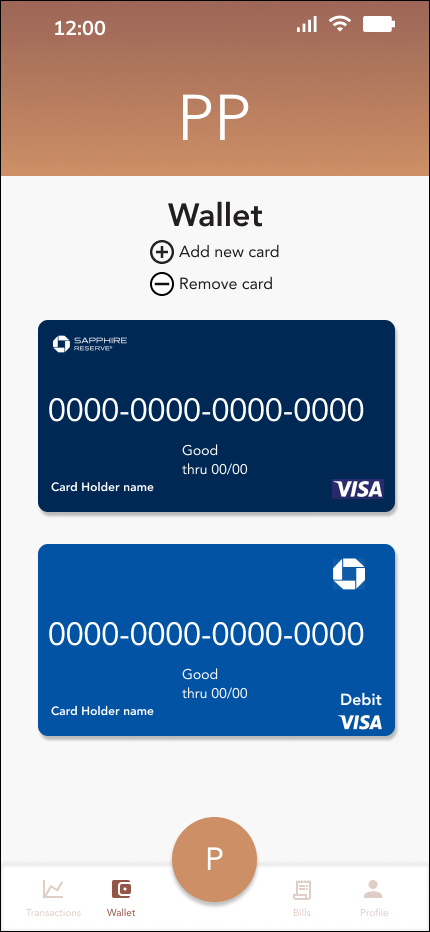
Option 2
1.All the Participants admired the design in option 2 as they mentioned that it gives them a look and feel of carrying cards in their phones.
Pay Screen Results
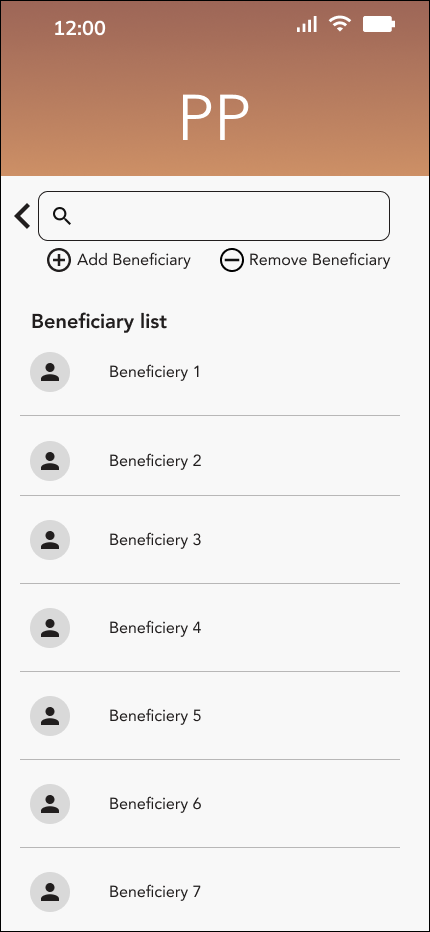
Option 1

Option 2
1.All the Participants preferred Option 2 over Option 1 as they mentioned that the box surrounding the name of each beneficiary will be easier to select a certain beneficiary without any mistake.
2. In addition to this, a lot of others said that the term 'beneficiary was too complex and recommended to simplify it to 'Payee'.
Bills Screen
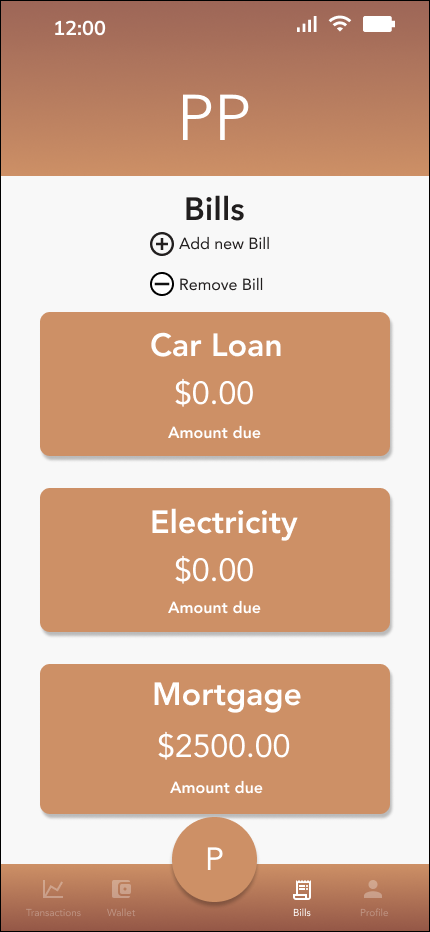
Option 1
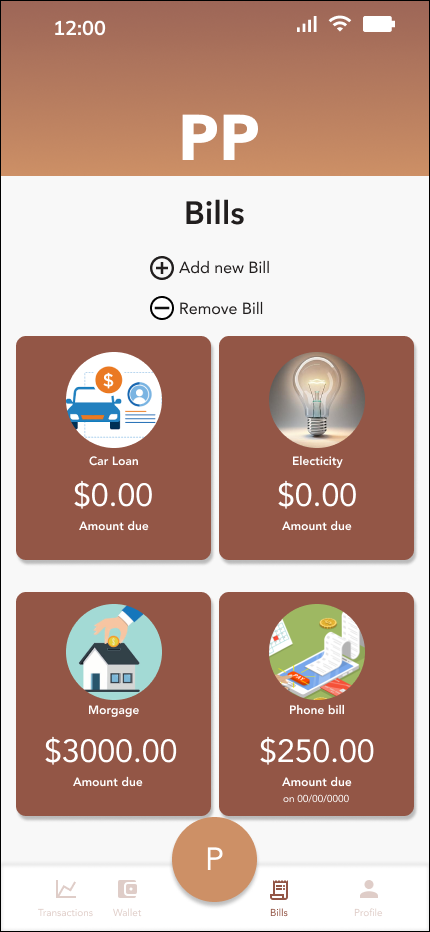
Option 2
1.All the participants admired option 2 as they said that they love the idea of providing images that represent each bill making the app fun to use.
2. The use of Color and styling was also validated through considering the Accessibility guidelines.
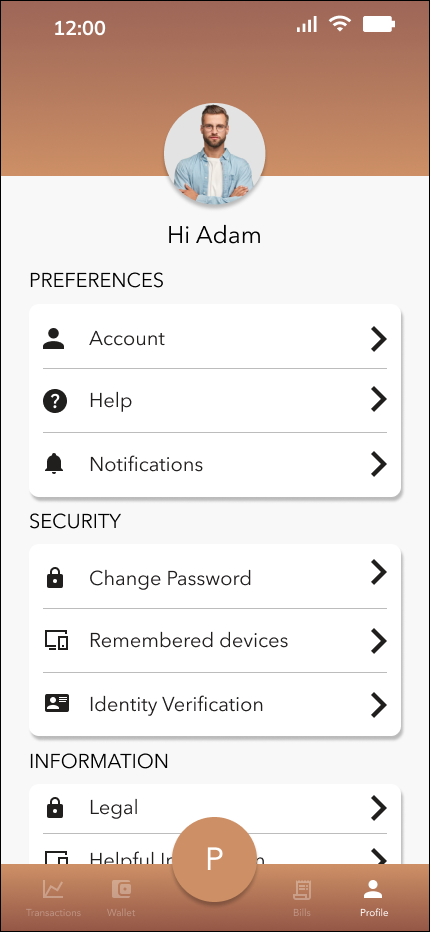
Option 1
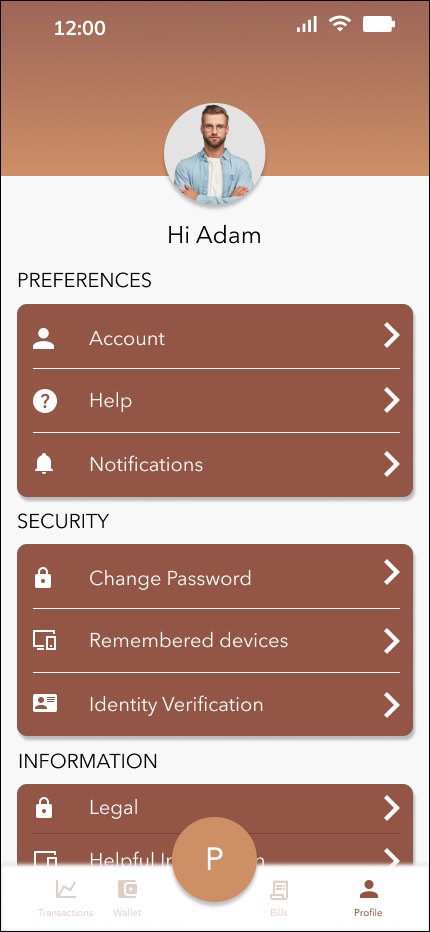
Option 2
1. The analyses for both the options for User Profile provided mixed reviews.
2. All of them said that the design in Option 1 was a little basic and could have been more colorful however they even pointed out that it was easy to read.
3. Even though Option 2 provided a colorful hierarchy, some of the participants indirectly expressed their concern on if it meets the accessibility guidelines and if it pass the color contrast.
Final Mockups
Navigation Screens
E Wallet Screens
Bills Screens
Money Transfer Screens
Outcome & Learning
This was a fun project and an awesome experience to create a full case study from beginning to end, especially since it aligns with my experience working with Financial Services. I feel like I achieved a lot working on this project and I learned a lot from the design insights to create a more intuitive experience for users who weren’t aware of it but had ingrained actions. I also understood that users were hesitant with personal information and very particular with privacy and security especially when traveling to have their information secure as well as payments. From my experience coming from India, I also understood that immigrants living in US want to send money for various reasons and they want a user friendly and intuitive experience. I look forward working on more projects and expanding my UX Designs moving forward!